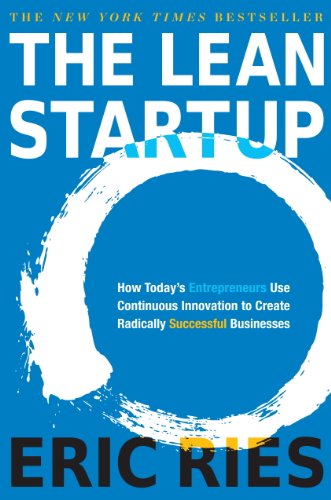

This article is an excerpt from the Shortform summary of "The Lean Startup" by Eric Ries. Shortform has the world's best summaries of books you should be reading.
Like this article? Sign up for a free trial here .
In Lean Startup, Eric Ries supports decreasing your batch size. Don’t overinvest in huge feature releases. Release less and more often, and you’ll learn faster.
The Envelope Analogy
Imagine you have 100 letters to mail. Each letter needs to be signed, folded, put in an envelope, sealed, and stamped. How would you approach this?
Your intuition is likely to batch each separate step and do all 100 at once. You’ll sign all 100 letters. Then you’ll fold all 100 letters. Then you’ll put 100 letters in 100 envelopes. And so on.
Surprisingly, Eric Ries claims this is slower than fully processing each letter at once – a small-batch method. You’d think that you get better at each individual process when you do it repetitively. But this doesn’t make up for the additional logistics needed to stack 100 folded papers, stack 100 filled but unsealed envelopes, and so on.
If you’d like to watch people fold envelopes for 3 minutes, here’s a video showing the difference:
(Note this could be biased if the participants knew the point of the outcome, and the left folder was sandbagging, but we’ll focus on the point.)
There’s another benefit to small batches – you figure out problems much earlier. What if the envelopes are old and the glue has worn out? What if the paper’s printed in the wrong size?
In a large batch, you might figure this out after you’ve already done 300 previous steps and have to redo your work. With small batches, you figure this out almost immediately.
This concept maps directly onto building a startup. Instead of releasing a fully-featured product once a year, you could release small batches of features regularly. With smaller batches, you detect problems and measure impact earlier. Most importantly, you might find earlier that customers don’t actually want what you’re building. Would you rather find this out incrementally with 5 small batches in 5 weeks, or 1 big batch in 10 weeks?
Small Batch Anecdote: Xiaomi
Xiaomi, a Chinese smartphone maker and one of the biggest in the world, is well-known for launching weekly updates to their phones’ operating systems. Engineers scour user forums looking for feature requests. They’re quickly implemented, tested, and rolled out to all its users, sometimes within that week. Users then give feedback on the new release to point out bugs and suggest new features.
Contrast this approach to the monolithic, huge-batch method of Apple, where a new version of iOS is released annually, and minor updates are introduced once every few months.
In comparison to Apple, Xiaomi users feel with small batches:
- their needs are being listened to. They’re actually getting stuff they requested.
- their products are getting visibly better every week, rather than every year. There’s a constant sense of progress.
Small Batch Anecdote: Small Batches in Medicine
In hospitals, medications need to be shipped from the pharmacy to patient floors. A common structure is once-a-day shipment, in typical large-batch thinking. It would seem that preparing all medications at once in the pharmacy, and shipping a large batch once a day, would be more efficient.
But this thinking ignores errors that arise due to large batches. During the 24 hours between shipments, patient orders may have changed, which means meds have to be trashed or sent back to the pharmacy. In turn, this means patients don’t get the meds they need, and actual health complications can result. All of these errors are very costly, more than the time gained in efficiency.
Studies have shown that reducing daily batches to 4 to 6 batches a day can reduce waste by over 30%, decrease pharmacy workload, and save money. Even though it requires more delivery staff to make more trips, it saves money in the big picture: patients get matched with up-to-date medication needs, and time-sensitive medications expire less frequently.
The Vicious Cycle of Expanding Batches
Large-batch setups tend to continuously grow in size. Here’s why.
In traditional companies, work will follow a waterfall model, where a batch of work flows sequentially from department to department. Let’s say a feature needs to be built. Marketing talks to users and gives the designers a spec of feature requirements. Designers create the user interaction and interface mockups, then pass them to the engineering team. Once the engineers are done, they ship it to QA, who approves release. Like a waterfall, the work moves sequentially from one block to the next.
In theory, this maximizes individual efficiency, like the envelope stuffing example earlier. But it ignores the problem of imperfect communication and errors. For example, imagine the designers pass the batch to engineering. Engineers have questions about how the UI is supposed to work, or there might be conflicts with the old UI. Engineers now have to go back to the designers, who are now delayed on their new batch. This eventually grinds progress to a halt.
There’s another psychological problem with big batches – each addition is small compared to the ever-growing batch. If your batch size were just 2 days of work, then spending a day fixing a new bug seems like a huge investment. But if the batch size has grown to 50 days of work, what’s adding one more day? No one wants to jeopardize a huge release with a potentially critical bug. Thus a bloated batch gets even bigger.
This vicious cycle keeps happening until, before you know it, you’re just releasing one change per year.
How can you reduce batch size?
- Instead of a waterfall model, adopt an agile model that promotes cross-functional teams working together and communicating face-to-face. For example, you might put engineers, designers, and marketers on the same team, tasked with rolling out new features.
- Build in automated testing. When you push small changes often, you need to make sure they’re not breaking anything. Automation cuts down on overhead.
- Build a real-time metrics page that shows key performance indicators like sales and signups. If any major drops happen, red flags will sound, and you can roll back the changes to figure out where the error is.
- Find faster ways to prototype. In software, modern frameworks let you build apps more quickly than ever before. Marketing software like Leadpages lets you design new landing pages in your browser. In hardware, CAD and 3D-printing speed up prototyping.
Question: Think about what a batch of work means in your situation. Is this organized the most effectively? How do you know? How can you reduce the batch size?
———End of Preview———

Like what you just read? Read the rest of the world's best summary of "The Lean Startup" at Shortform . Learn the book's critical concepts in 20 minutes or less .
Here's what you'll find in our full The Lean Startup summary :
- How to create a winning Minimum Viable Product
- How to understand how your startup will grow
- The critical metrics you need to track to make sure your startup is thriving






